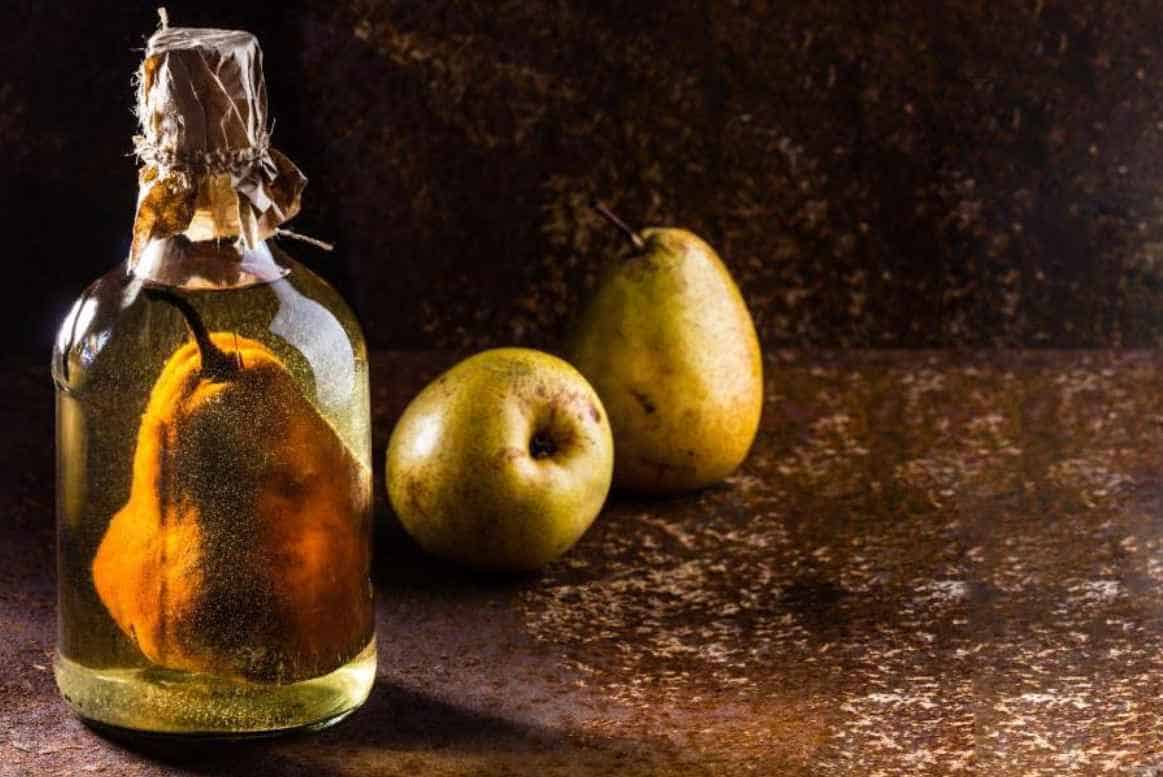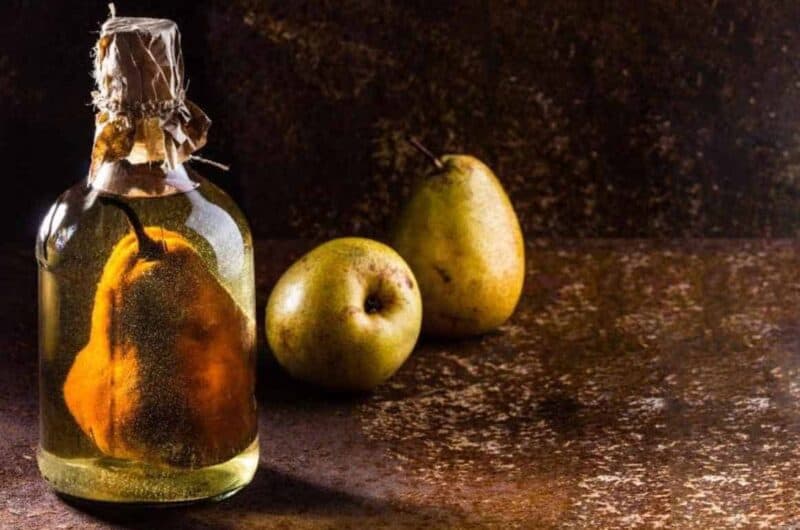Most wines available today in the market are from fermented juices of grapes. But have you heard of pear wine?
If you want to explore the winemaking world, creating a pear wine is the first recipe to try. The steps are easy to follow and beginner-friendly. Also, pears are available all year round, so there is no need to wait for any season to start your pear wine at home.
Why This Recipe Works/ Why We Like This Recipe
1. It is highly nutritious: A drink that is delectable and nutritious at the same time makes it fitting for any population. Pears are rich in vitamins, minerals, fiber, and phytochemicals. It is also known to decrease blood cholesterol and the risk of heart problems.
2. Pear is available all year round: There’s no excuse not to make this recipe because pears are available all year round. Today, there are ten varieties of pears available in the US. Bartlett, Anjou, and Bosc are some of the popular ones. Each has its distinctive texture and flavor characteristics. Some are crisp some are soft and juicy. If you’re up for a challenge, why not try out the different varieties or combine them into one?
3. It is easy to follow: Fermenting can be intimidating, especially if someone is new to winemaking. But that differs from a recipe that is easy to understand. This recipe is straightforward. You can do it at home and enjoy your pear wine without too much hassle.
What You Will Need
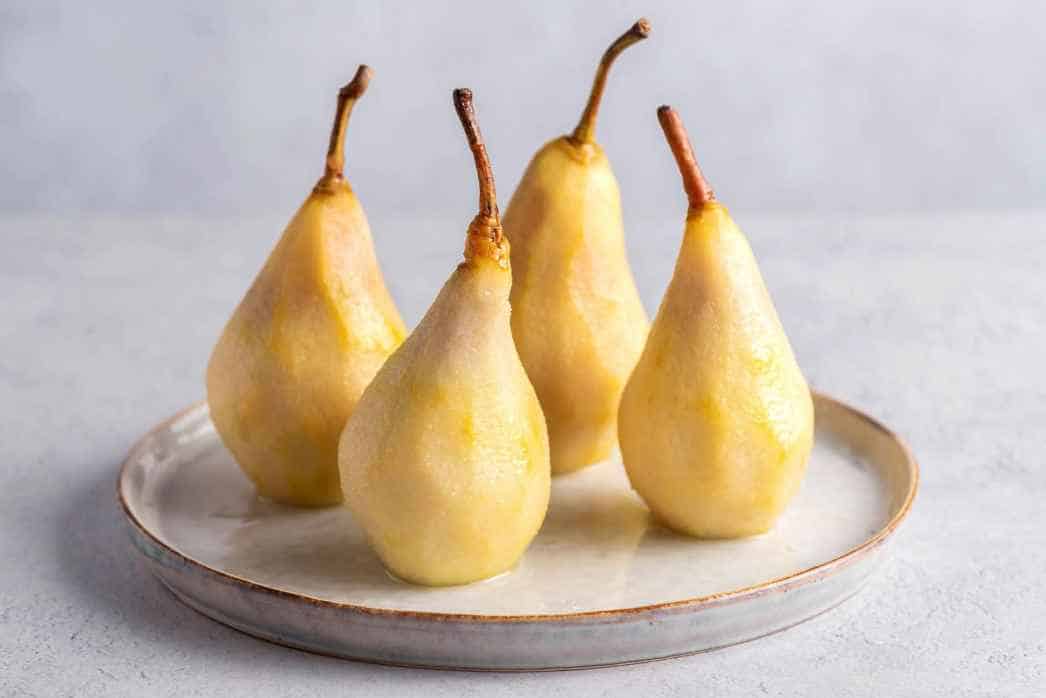
Ingredients:
- 5 lbs pears
- 22 oz granulated sugar
- Water to one gallon
- 1.25 tsp pectic enzyme
- ⅛ tsp wine tannin
- 1 tsp yeast nutrient
- 1 packet of EC-1118 Yeast
Equipment Needed:
- Brewing pot
- Fermentation vessel
- Air lock with Star San sanitizer
How to Make Pear Wine Recipe
Step 1. Preparation
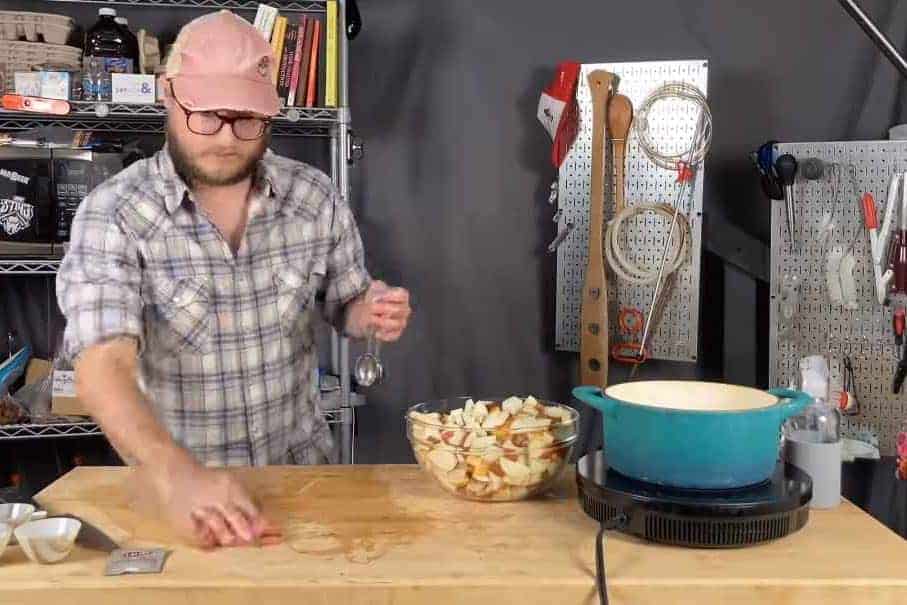
Pour a liter of water into the brewing pot and bring it to a boil. While waiting, core and roughly chop 5 lbs of pears, leaving the skin on. Set aside. Once the water is boiling, cut the heat, then add 22 oz of granulated sugar. Stir, and let the sugar melt. Set aside.
Step 2. Combining ingredients
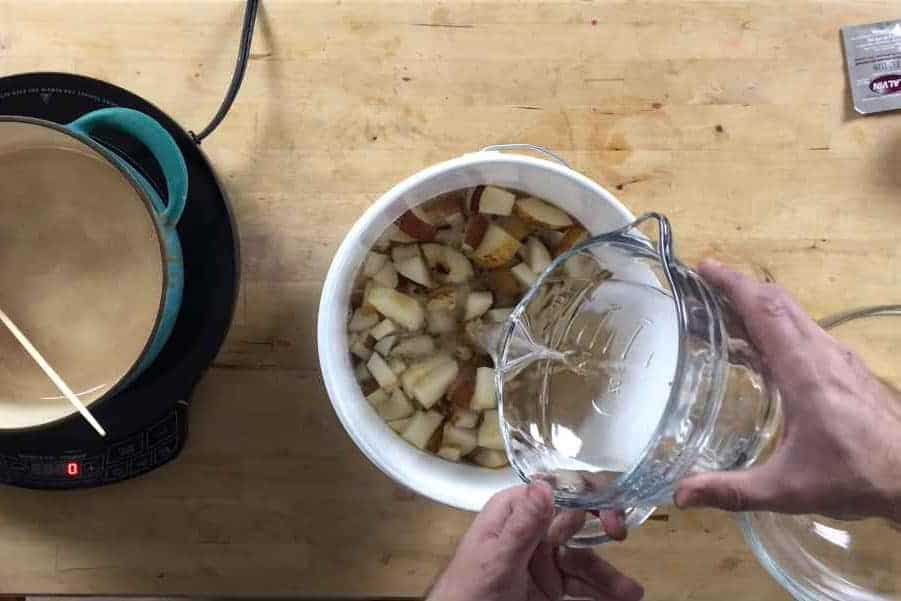
Transfer chopped pears into a sanitized fermentation bucket. Add ⅛ tsp of wine tannin and 1 tsp yeast nutrient. Pour the hot sugar syrup over the pears. Add more water until it reaches a gallon mark. Stir, and let it cool down.
Once cooled, add 1.25 tsp pectic enzyme. Stir. Add one packet of EC-1118 yeast. Stir again, then close the lid. Put in the airlock filled with Star San sanitizer. Then, set aside at room temperature.
Step 3. Fermentation
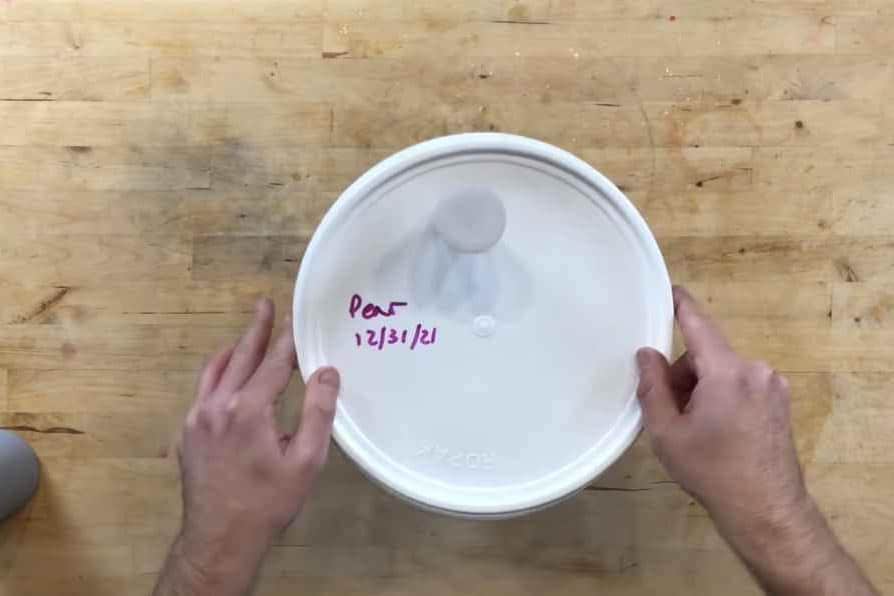
Open the fermentation bucket every day for the next few days to stir it. It will help break the fruit cap to prevent it from drying out. Do this for about a week or two. Then, stop before the fermentation activity ceases to preserve the CO2 blanket.
Step 4. Yeast Clean Up
Check the bucket to see if the fermentation activity has ceased. Stir it before closing the lid, then set it aside. Let the yeast continue to clean up for about a week before racking it to secondary. But if the mixture is crystal clear already, you can skip racking to secondary. Proceed to bottle the wine instead.
Step 5. Bottling
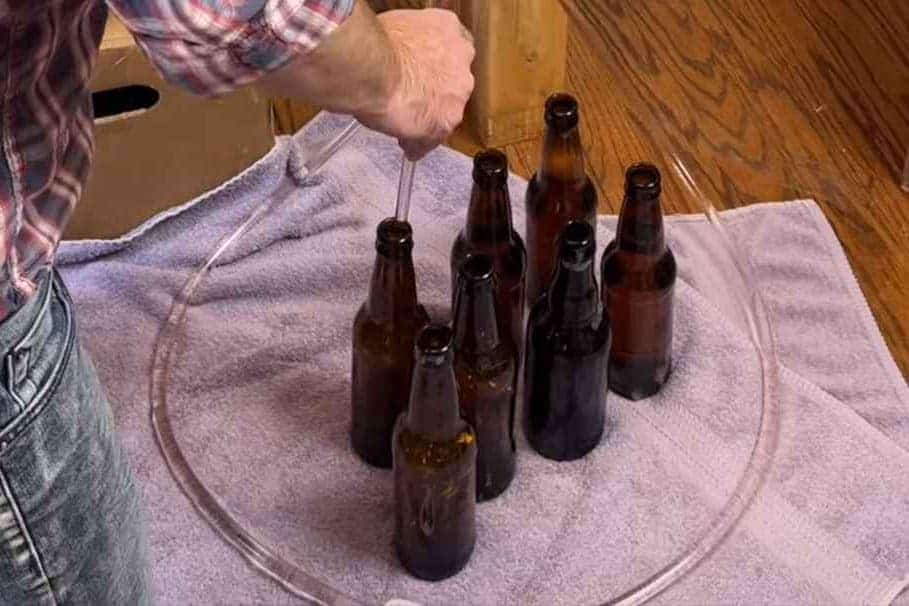
Once the mixture is crystal clear, transfer it into a bottle through siphoning. Make sure to bottle only the liquid and avoid the fruit pulp and yeast residue. Once sealed in a bottle, you can start the bottle aging for two weeks or more than a month. This recipe yields up to six 12-ounce bottles.
Note: You can rest it in secondary and do bulk aging or transfer it into a bottle for bottle aging. Whatever your preference is, ensure that you secure proper storage for your wine to avoid developing an unpleasant taste.
Tips and Tricks
Are you ready to enjoy a pear in its different and elevated form? If you do, read these tips and tricks before you start with your winemaking adventure.
- Sanitize all equipment. It is common knowledge that clean tools are crucial when making food, especially during fermentation. It helps to avoid contamination during preparation. Of course, we want the good bacteria to have a head start against the bad bacteria. So, to keep the balance, you may use a no-rinse solution to clean your equipment.
- Use a fermentation bucket. Most would recommend using a demijohn or carboy when making pear wine. But save yourself the hassle of placing 5 lbs of pear and overflowing the water in a narrow-mouthed container. You can use a fermentation bucket instead.
- Use a teaspoon to core a pear. We know how arduous coring a pear is. But save yourself some time! Using a knife, slice a pear in half. Scoop out the core using a teaspoon, and voila! You now have a seedless pear.
- Slightly ripen the pear. Avoid your pear wine tasting like apples by slightly ripening the pear before fermentation. Ripped pear produces a pronounced flavor giving your drink more depth. To know if a pear is ripe, put a slight pressure on the stem. If the stem gives, then it is ripe.
Frequently Asked Questions
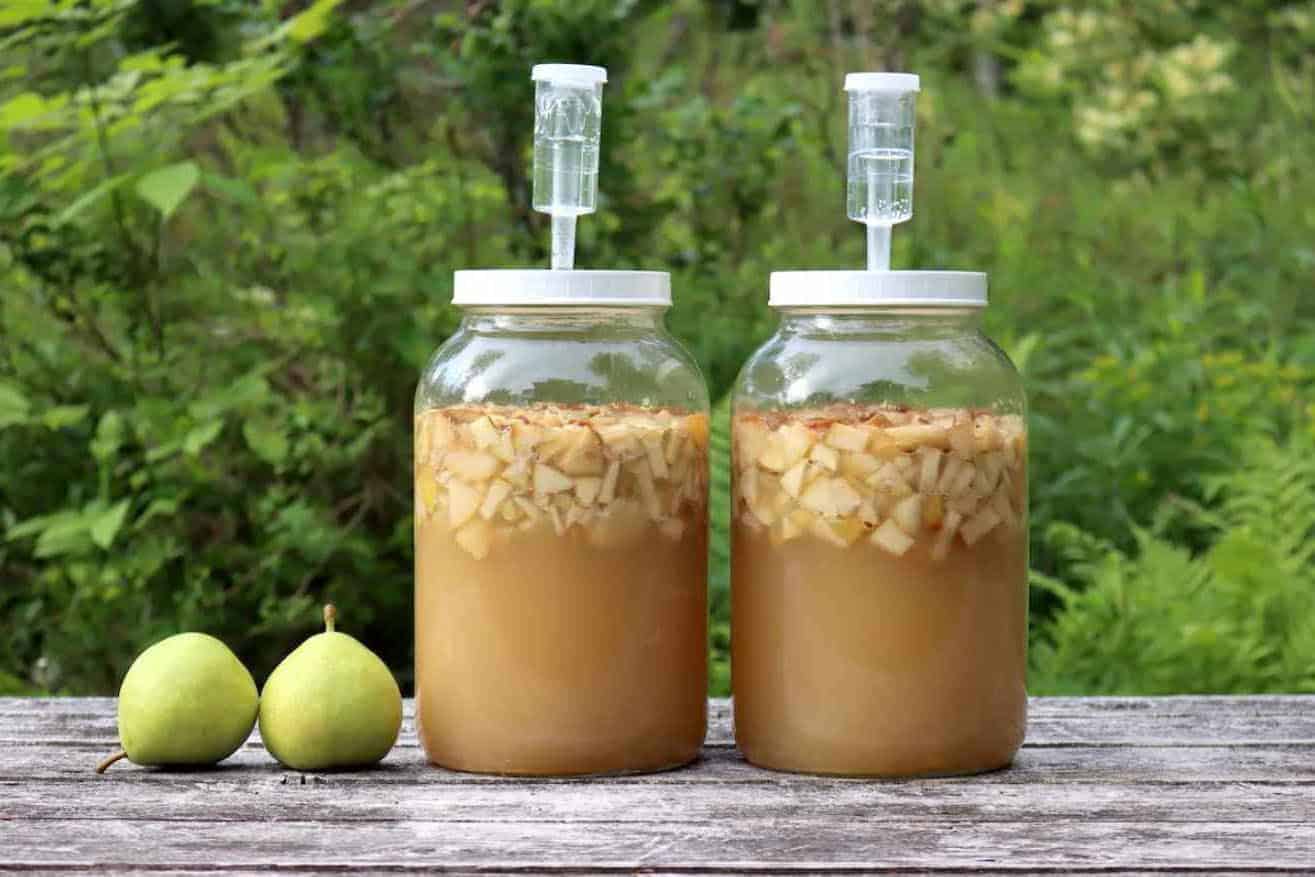
What does pear wine taste like?
Pear wine tastes like white wine but with a pear flavor. It gives a light and refreshing feel. But it also has a bold tannin taste on the palate. Pear wine is not too sweet and not too dry. And the good thing about homemade fruit wine is you can adjust its sweetness and dryness depending on your preference.
How to sweeten pear wine?
Sometimes, we want our wine a little sweeter. Back sweetening with sugar, honey, or a non-fermentable sweetener is best to add once the wine is fermented and stabilized. But whatever sweetener you’re planning to use, never skimp on stirring.
One fast and easy method to sweeten your drink is to fill a glass with pear wine and add droplets of simple syrup. Stir and give it a taste. Determine whether to add more or whether it’s good enough for your liking.
Does pear wine have alcohol?
Most fruit wines contain about 10-15% alcohol. This recipe has about 11% alcohol.
Pear wine has no added alcohol ingredient. Rather, it develops during the fermentation of the pear. Yeast converts pear sugars into alcohol. The higher the sugar, the higher the amount of alcohol content in the pear wine.
How long does a homemade wine last in the fridge?
Storage is the most crucial part of preserving a homemade fruit wine. Fruit wine can last up to a year or longer if stored at an optimum temperature of 55°F. Also, placing it out of direct light can avoid premature aging of wine.
When it comes to opened wine bottles, it is best to consume them within three days for better taste. Always keep it refrigerated if you still want to finish a bottle.
Summary
Now that you know how to make a pear wine, it’s time to give it a try and discover its tastes.
This pear wine recipe is perfect for summer days to keep you cool and refreshed. With just a few steps and a few weeks to ferment, you have yourself a wine recipe that you’ll surely repeat once you finish a couple of bottles.
Are you looking for more recipes that you can do at home? Don’t forget to check our other guides, so you don’t miss out on great recipes!
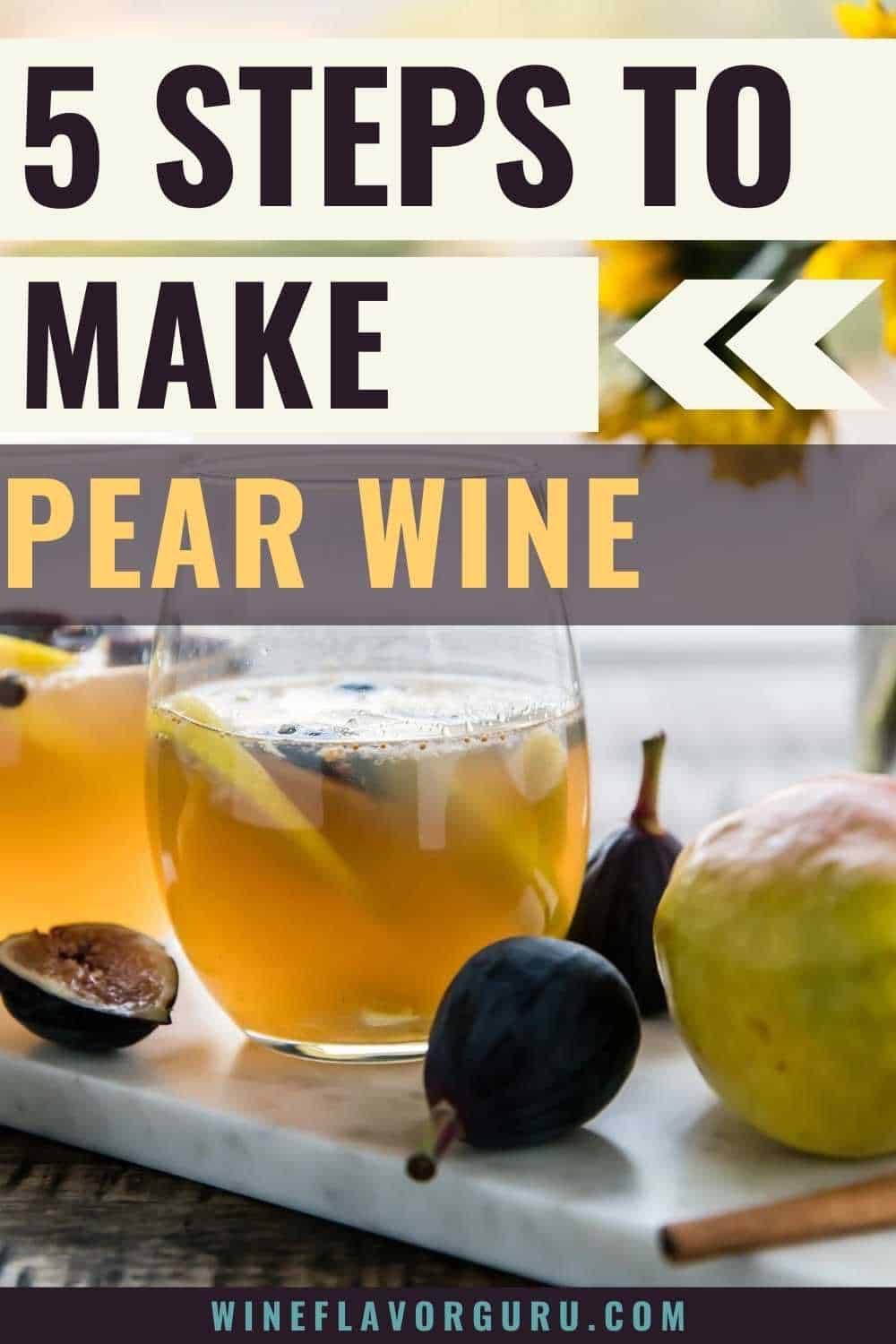
How To Make Pear Wine? (A Step-by-Step Guide)
Course: DIY Plans5 Simple Steps to Make A Pear Wine (Step-by-Step Guide)
Ingredients
5 lbs pears (cored and roughly chopped with skin)
22 oz granulated sugar
Water to one gallon
⅛ tsp wine tannin
1 tsp yeast nutrient
1 packet of EC-1118 Yeast
Directions
- Bring a liter of water to a boil. Once boiling, cut off the heat, then add granulated sugar. Mix well.
- In a fermentation bucket, combine pears, wine tannin, yeast nutrients, and hot sugar syrup. Give it a good stir.
- Once cooled down, add pectic enzyme and EC-1118 yeast. Stir, then place the lid on. Put an airlock. Set aside at room temperature for 10 to 14 days.
- Stir the mixture every day for a week or two.
- Once the fermentation activity is done, let the yeast clean up for another week.
- After a week, rack it off to secondary.
- Once the mixture is crystal clear, transfer it into 12 ounces bottles using a siphon. Then, seal it with a cap.
- Allow the wine pear to age for two weeks or more.

George Moore, co-founder of Wine Flavor Guru, is a charismatic entrepreneur with a rich background in California’s wine industry. Alongside Sylvia, he transformed a Sonoma County vineyard into a source of premium wines. George’s expertise in sourcing exceptional grapes and his approachable style make wine appreciation both accessible and engaging.
